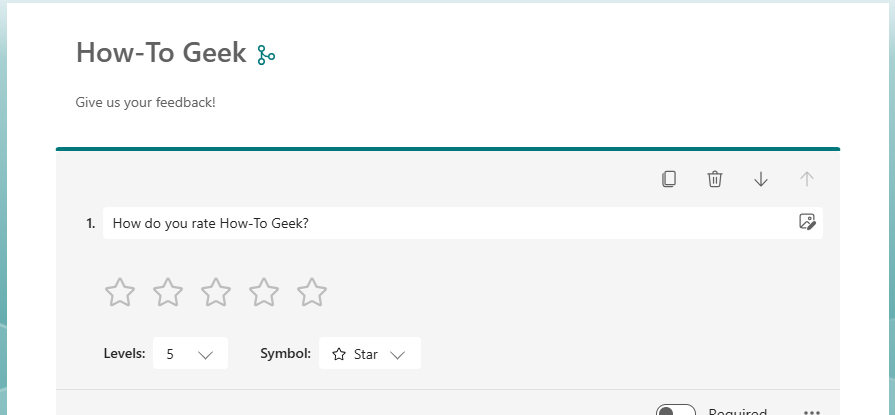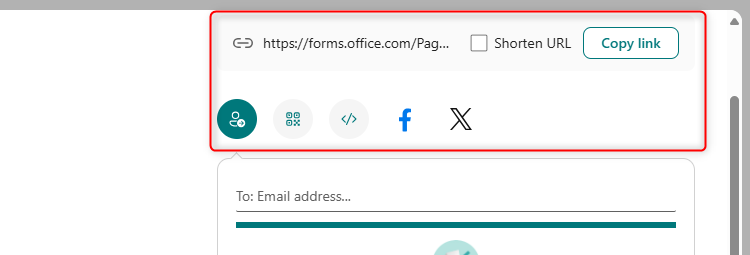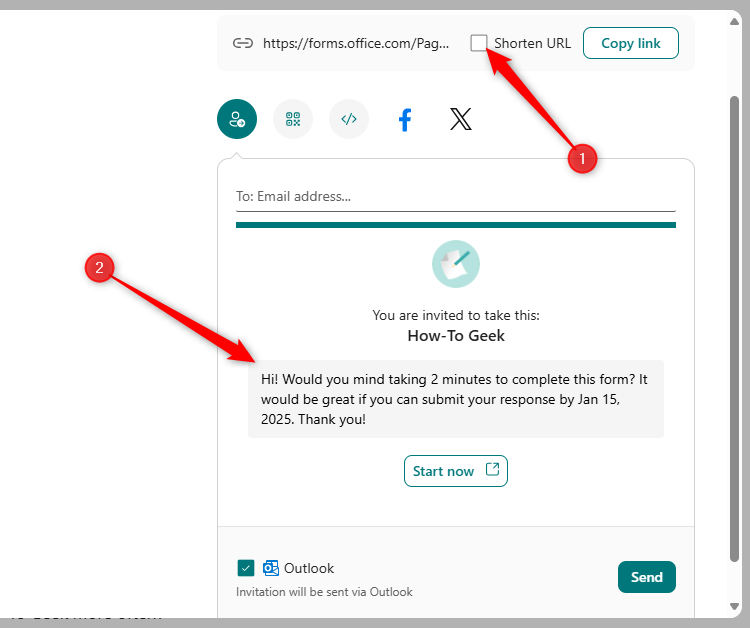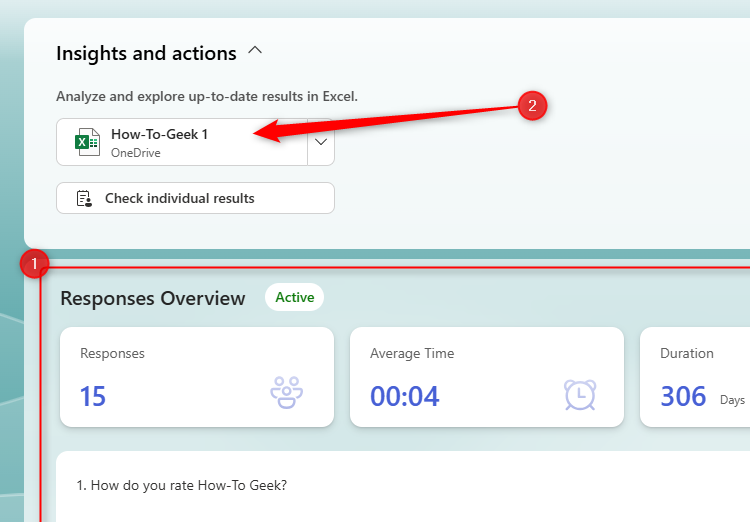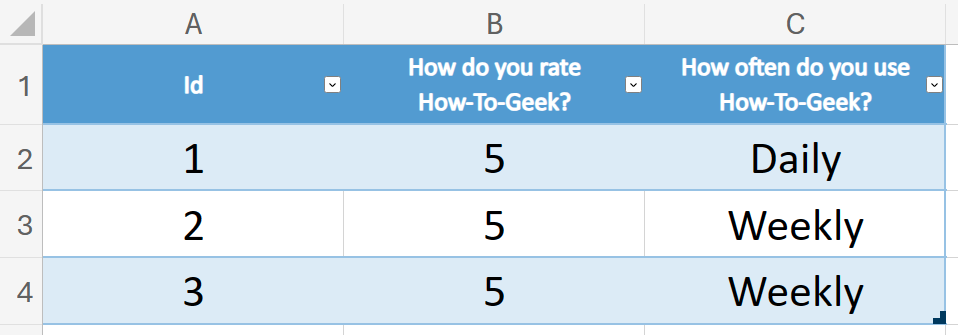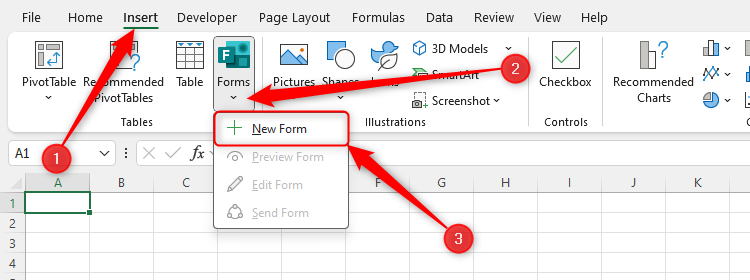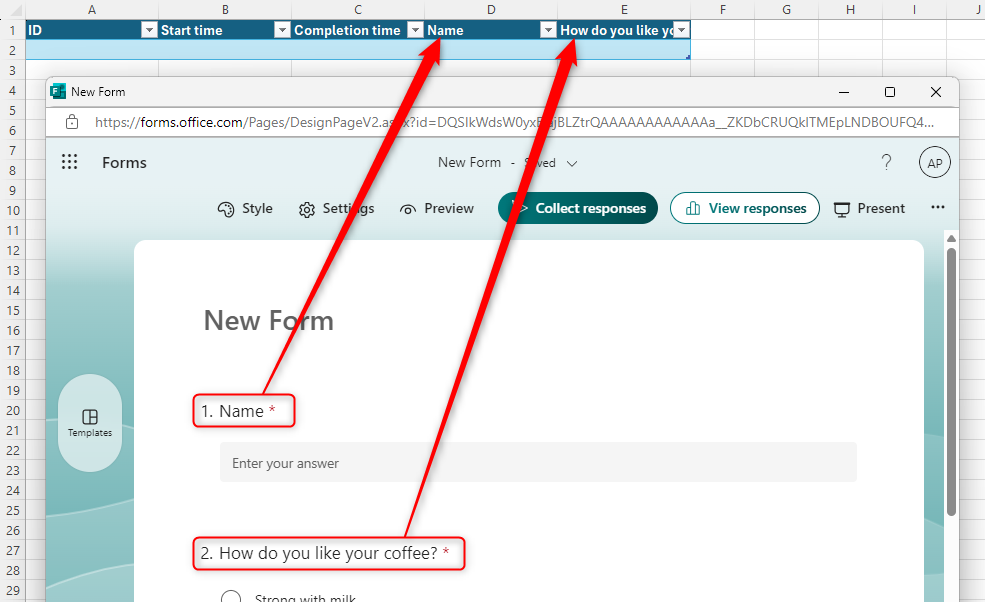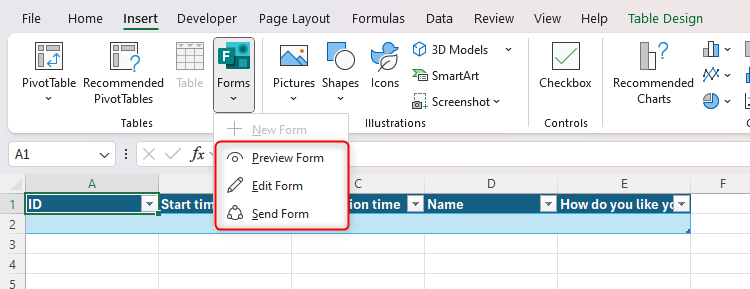Quick Links
Are you collecting data through Microsoft Forms and want to review and analyze the results in real time? Well, fortunately for you, Microsoft Forms syncs live with Microsoft Excel, meaning you can see and manipulate new entries as they come in.
If your Microsoft Form is still live, and you want to analyze the data as entries build up in the same way as you would when using Google Forms alongside Google Sheets, Microsoft lets you do this through both Excel for the web and the Microsoft Excel desktop app, though the method for each process varies slightly.
Syncing Microsoft Forms With Excel for the Web
If you prefer working online, after creating your form in Microsoft Forms, you can sync the responses to Excel for the web.
Step 1: Create and Share Your Microsoft Form
Start by creating your form using Microsoft Forms. Make sure you give your form a title and a description, and then choose from the various question types as you develop your questionnaire.
As you add information and type the questions, your form will save automatically to OneDrive.
When you have finished creating your form, confirm you’re happy with the options available for each answer and make sure you’ve toggled the “Required” button for all mandatory questions. This is a crucial step to ensure that you can fully analyze the data for the questions that really matter when you review the results in Excel for the web.
Now, click “Collect Responses” and then choose how you will distribute your form, whether through a link, an email, a QR code, an embedded code on a website, or social media.
If you choose to send a URL, check “Shorten URL” to create a more condensed link. Also, if you send the form invitation via email, personalize the email content before typing an email address and clicking “Send.”
Step 2: View, Edit, and Use the Responses in Excel for the Web
When you have started to receive entries, you’ll see a number appear next to the View Responses button in the ribbon at the top of your Microsoft Forms editing window. Click “View Responses” to see the results in more detail.
As well as viewing the responses in your browser (see “1” in the screenshot below), you can open the results in table form in Excel for the web (“2” in the screenshot below), where you can manipulate and analyze your data in more depth. To do this, click the file name in the Insights And Actions section.
Your Internet browser will then open Excel for the web in a new tab, and your results will appear in a table. If your Microsoft Form is still open for new entries, they will appear automatically as additional rows at the bottom of your table as soon as they’re submitted.
You can now amend your table to display the data you want to see in the format that works best for you. For example, in my table, I don’t need to know the start or completion times, or the email addresses for each entry. I want the headers to be clearer, and I want to center-align the text in each cell.
You can undo (Ctrl+Z) any actions you perform on your results table, but once you close the window, any changes you have made will be irreversible. When you reopen the spreadsheet, the changes you have made will remain in place.
Finally, with the data still coming in, you can visualize your responses by adding charts in your Excel for the web workbook as you would in the desktop app. Highlight the data or the column(s) you want to display in a chart, click “Insert” on the ribbon, and use the drop-down option to choose the appropriate one.
The beauty of this feature is that whenever a new entry is submitted to your Microsoft Form, any charts you have created that link to the data will update automatically. This means you can dynamically analyze your data without having to manually change anything within your Excel for the web spreadsheet.
Syncing Microsoft Forms With Excel’s Desktop App
Towards the end of 2024, Microsoft expanded this syncing capability to the Excel desktop app. In fact, Microsoft Forms now has a dedicated section embedded within the Microsoft Excel ribbon, making the whole process much more streamlined by allowing you to build and analyze your form and its responses in one place.
You’ll also prefer this method if you plan to use more advanced data manipulation tools, as Excel’s desktop app is more sophisticated than its web-based counterpart. However, remember that you need to have subscribed to Microsoft 365 to use the latest version of the Excel desktop app.
In Microsoft Excel’s desktop app, click “Insert,” and select the “Forms” drop-down menu. Then, click “New Form.”
The New Form option in the Forms drop-down of the Insert tab on the ribbon only becomes available once you have saved your Excel workbook and
turned on AutoSave
, since Microsoft uses OneDrive to activate the Forms-Excel integration.
After you click “New Form,” a new window opens where you can create your Microsoft Forms form. As soon as you start typing your questions in this new Microsoft Forms window, Excel will start the sync, automatically adding the questions along the first row.
In your Excel responses worksheet, click the “Forms” icon again to open the form in preview mode (“Preview Form”), edit mode (“Edit Form”), or in a new tab with a dialog box that lets you send the form to respondents (“Send Form”).
As soon as people start submitting their responses, you’ll see them appear in your desktop spreadsheet.
As with the Excel for the web method outlined above, you can turn your data into charts and manipulate your table formatting to make the most of the information as it lands in your spreadsheet.
You can close and reopen this spreadsheet anytime, safe in the knowledge that it will continue syncing with Microsoft Forms (if it is open to new entries and you maintain AutoSave connectivity to OneDrive).
Whether you’re creating your Microsoft Form in your browser or through the Forms-Excel integration, be sure to make the most of the program’s many useful tools and features.


